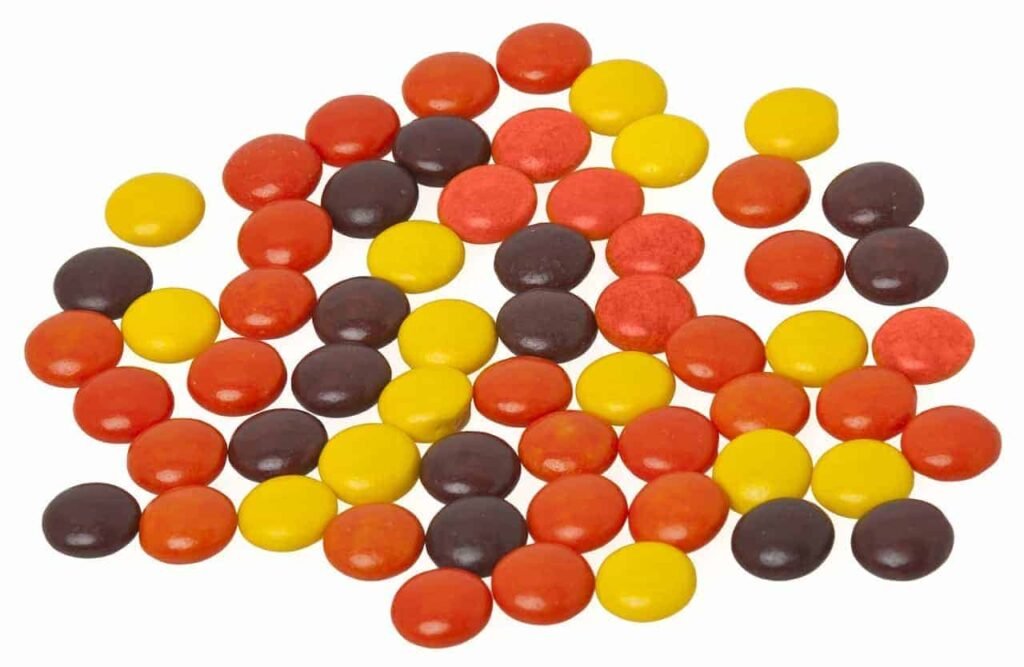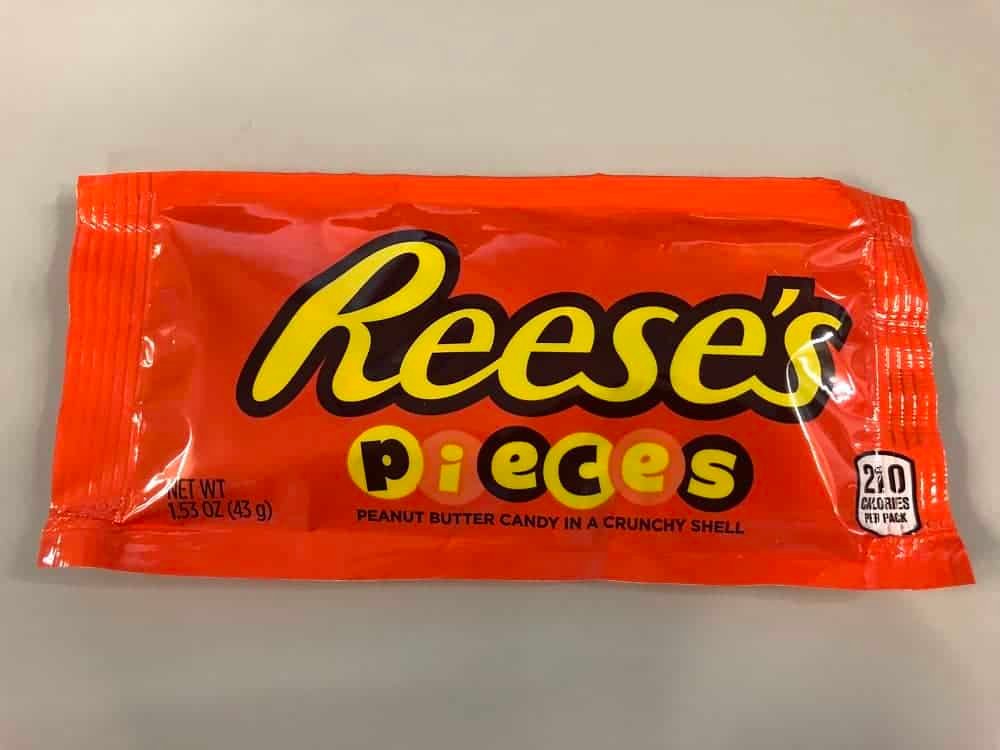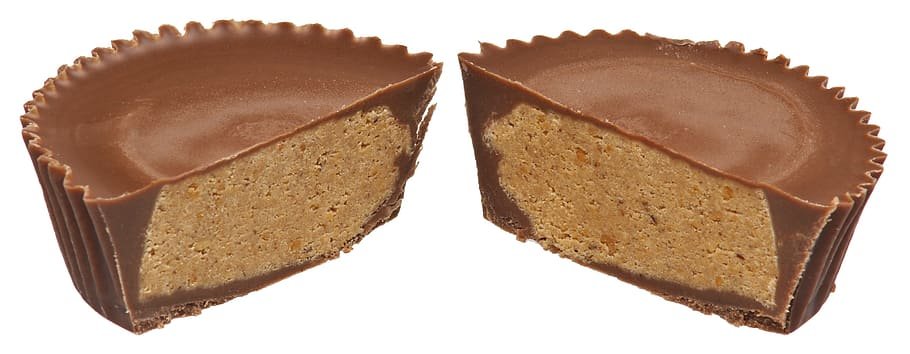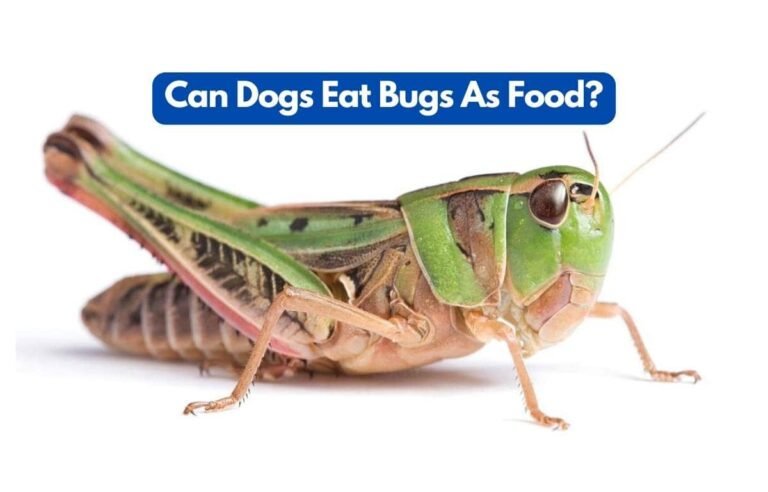Can Dogs Eat Reese’s Pieces? The Real Truth From Experts

As dog owners, we all want to spoil our furry friends with tasty treats from time to time. One popular treat that often tempts us is Reese’s Pieces, those delicious candy-coated peanut butter candies. But can dogs eat Reese’s Pieces? Are they safe for our canine companions to consume? The short answer is yes, dogs can eat Reese’s pieces but it’s not recommended.
While a few pieces here and there likely won’t cause any harm, it’s best to stick to treats specifically formulated for dogs to ensure they are getting the nutrients they need without any added ingredients that could be harmful.
In this comprehensive guide, we will explore the potential risks and benefits of feeding Reese’s Pieces to dogs, discuss the composition of these treats, and provide guidelines for responsible pet owners. So, let’s dive in and find out if dogs can enjoy Reese’s Pieces or if it’s best to keep them as a human indulgence only.
Can Dogs Eat Reese’s Pieces?
Technically, dogs can eat Reese’s Pieces as they don’t contain any toxic ingredients like chocolate or raisins. However, it’s not recommended to feed your dog this candy as it’s high in sugar and unhealthy for them.
Feeding your dog too much Reese’s pieces can lead to gastrointestinal distress, weight gain, and dental problems. Stick to healthier treat options for your furry friend to ensure their overall health and well-being.

Understanding Reese’s Pieces Ingredients
Reese’s Pieces are a popular candy made of peanut butter and chocolate. As a dog owner, you may be wondering whether it is safe to share this candy with your furry friend. Before you decide, it is essential to understand the ingredients in Reese’s Pieces and their potential hazards for dogs.
Main Ingredients
Reese’s Pieces are made of the following main ingredients:
1. Peanut butter: Peanut butter is generally safe for dogs and can be a healthy treat in moderation. It is a good source of protein and healthy fats.
2. Sugar: Reese’s Pieces contain a significant amount of sugar, which can be harmful to dogs if consumed in large quantities. It can lead to obesity, dental problems, and other health issues.
3. Partially hydrogenated vegetable oil: This ingredient is used to give Reese’s Pieces their smooth texture. It is high in trans fats, which can increase the risk of heart disease, diabetes, and other health problems.
4. Milk: Milk is used to make the chocolate coating on Reese’s Pieces. While milk is generally safe for dogs, some dogs may be lactose intolerant and experience digestive issues.
Nutritional Value of Reese’s Pieces and How It Affects Dogs
To understand the impact of Reese’s Pieces on dogs, it’s essential to consider their nutritional value and how it aligns with a dog’s dietary needs.
Nutritional Composition of Reese’s Pieces
The nutritional composition of Reese’s Pieces per 100 grams is as follows:
- Calories: 502 kcal
- Fat: 24 grams
- Carbohydrates: 64 grams
- Protein: 12 grams
These numbers indicate that Reese’s Pieces are high in calories, fat, and carbohydrates, while protein content is relatively low. While the fat content in peanut butter can provide some health benefits for dogs, excessive fat consumption can lead to pancreatitis and weight gain. It’s best to opt for safer alternatives and treats specifically designed for dogs.

Potential Hazards: What happens if my dog eats too much Reese’s Pieces?
Reese’s Pieces are a popular candy that contains peanut butter and sugar, but no chocolate. Chocolate is toxic to dogs, so Reese’s Pieces are not as dangerous as other candies that contain chocolate. However, they are still unhealthy and can cause problems if your dog eats too much of them.
Some of the problems that can occur if your dog eats too much Reese’s Pieces are:
- Obesity: Reese’s Pieces are high in calories, fat, and sugar, which can lead to weight gain and obesity in dogs. Obesity can cause many health issues, such as diabetes, arthritis, heart disease, and more.
- Cavities: The sugar in Reese’s Pieces can damage your dog’s teeth and cause cavities. Cavities can be painful and lead to infections and tooth loss.
- Pancreatitis: The fat in Reese’s Pieces can trigger pancreatitis, which is a serious inflammation of the pancreas. Pancreatitis can cause vomiting, diarrhea, abdominal pain, fever, and dehydration. It can also be fatal if not treated promptly.
- Allergic reaction: Some dogs may be allergic to peanuts or other ingredients in Reese’s Pieces. This can cause itching, hives, swelling, difficulty breathing, and anaphylaxis. Anaphylaxis is a life-threatening condition that requires immediate veterinary attention.
- Choking hazard: Reese’s Pieces are small and can pose a choking hazard, especially for small dogs.
If your dog eats a few Reese’s Pieces by accident, it is unlikely to cause any harm. However, you should monitor your dog for any signs of distress or discomfort. If your dog eats a large amount of Reese’s Pieces or shows any symptoms of the problems mentioned above, you should contact your veterinarian as soon as possible.
Reese’s Pieces are not a healthy or beneficial treat for dogs. They are meant for human consumption only. You should keep them out of your dog’s reach and avoid giving them to your dog intentionally. There are many other treats that are safer and more nutritious for your dog, such as fruits, vegetables, lean meats, or dog biscuits.
What Should I Do If My Dog Ate A Bag Full Of Reese’s Pieces?
If your dog ate a bag full of Reese’s Pieces, you should act quickly and contact your veterinarian or an emergency clinic as soon as possible.
If your dog ate a bag full of Reese’s Pieces within the last 15 minutes or so, your veterinarian may advise you to induce vomiting at home to prevent further absorption of the candy. This can be done by giving your dog a small amount of hydrogen peroxide (3%) orally, using a syringe or a turkey baster. The dose is 1 teaspoon per 10 pounds of body weight, up to a maximum of 3 teaspoons. Do not give more than one dose and do not induce vomiting if your dog is unconscious, or having seizures.
On the other hand, if your dog ate a bag full of Reese’s Pieces more than 15 minutes ago, or if you are not sure how much time has passed, do not induce vomiting at home. Instead, bring your dog to the nearest veterinary clinic for evaluation and treatment. Your veterinarian may give your dog activated charcoal to bind the toxins in the candy and prevent further absorption. Your dog may also need fluids, medications, and supportive care depending on the severity of the symptoms.

Can a dog eat Reese’s peanut butter cups?
No, dogs cannot eat Reese’s peanut butter cups. Reese’s peanut butter cups are made of milk chocolate and peanut butter, both of which are bad for dogs. Chocolate is toxic to dogs because it contains theobromine and caffeine, which can cause heart problems, seizures, vomiting, diarrhea, and even death in large doses. Peanut butter is not toxic to dogs, but it can cause allergies, obesity, pancreatitis, and dental issues if eaten too much.
If your dog eats a few Reese’s peanut butter cups by accident, you should monitor your dog for any signs of chocolate poisoning, such as:
- Restlessness
- Hyperactivity
- Rapid breathing
- Increased heart rate
- Tremors
- Seizures
- Vomiting
- Diarrhea
The severity of the symptoms will depend on the amount and type of chocolate your dog ate, as well as your dog’s size, weight, and health. Milk chocolate is less toxic than dark chocolate, but it still contains enough theobromine and caffeine to harm your dog. A single cup may not be fatal, but it can still make your dog sick.
If your dog shows any of these symptoms, or if your dog ate a large amount of Reese’s peanut butter cups, you should contact your veterinarian or an emergency clinic as soon as possible. They may induce vomiting, give activated charcoal or administer fluids and medications to treat your dog.
Reese’s peanut butter cups are not a safe or healthy treat for dogs. They are meant for human consumption only. You should keep them away from your dog’s reach and avoid giving them to your dog on purpose.
How many Reese’s peanut butter cups are too many for a dog?
It’s important to note that Reese’s peanut butter cups contain chocolate. Also, the amount of chocolate that is too much for a dog depends on several factors, such as:
1. The type of chocolate:
Different types of chocolate have different amounts of theobromine and caffeine, which are toxic substances in chocolate for dogs. The darker and more bitter the chocolate, the more toxic it is. For example, cocoa powder, baking chocolate, and dark chocolate are more dangerous than milk chocolate or white chocolate.
2. The amount of chocolate:
The more chocolate your dog eats, the more likely it is to cause poisoning. Even a small amount of dark chocolate can be harmful to a small dog, while a large dog may tolerate more milk chocolate.
3. The weight of your dog:
The smaller your dog, the more sensitive it is to chocolate poisoning. A large dog may be able to handle a small piece of chocolate, while a tiny dog may get sick from the same amount.
4. The health of your dog:
Some dogs may have underlying conditions that make them more vulnerable to chocolate poisoning, such as heart problems, kidney problems, or diabetes.
A general rule of thumb is that mild symptoms of chocolate poisoning occur when a dog consumes 20 mg of theobromine per kilogram of body weight, cardiac symptoms occur at 40 to 50 mg/kg, and seizures occur at more than 60 mg/kg.
To give you an idea, here are some examples of how much chocolate can be toxic to dogs of different weights:
- A 5-pound dog can get sick from eating 1 ounce of milk chocolate, 0.3 ounces of dark chocolate, or 0.1 ounces of baking chocolate.
- A 10-pound dog can get sick from eating 2 ounces of milk chocolate, 0.6 ounces of dark chocolate, or 0.2 ounces of baking chocolate.
- A 20-pound dog can get sick from eating 4 ounces of milk chocolate, 1.2 ounces of dark chocolate, or 0.4 ounces of baking chocolate.
- A 50-pound dog can get sick from eating 10 ounces of milk chocolate, 3 ounces of dark chocolate, or 1 ounce of baking chocolate.
So, what’s the chocolate content in Reese’s peanut butter cups?
Reese’s peanut butter cups are made of milk chocolate, which has about 50 mg of theobromine per ounce. Therefore, one peanut butter cup (0.6 ounces) has about 30 mg of theobromine. This means that:
- A 5-pound dog can get sick from eating half a peanut butter cup.
- A 10-pound dog can get sick from eating one peanut butter cup.
- A 20-pound dog can get sick from eating two peanut butter cups.
- A 50-pound dog can get sick from eating five peanut butter cups.
These are approximate values and may vary depending on the individual dog and the type and brand of chocolate. The best way to prevent chocolate poisoning in dogs is to avoid giving them any chocolate at all.

Alternatives to Reese’s Pieces for Dogs
There are many alternatives to Reese’s Pieces for dogs that are healthier and more nutritious. Some of the options you can try are:
1. Homemade dog treats:
You can make your own dog treats at home using ingredients that are safe and beneficial for your dog, such as oatmeal, peanut butter, pumpkin, apples, carrots, cheese, chicken, etc. You can also use different shapes and sizes of silicone molds to make fun and bite-sized treats for your dog. Here are some recipes you can try.
2. Fruits and vegetables:
Fresh fruits and vegetables are a great way to give your dog some vitamins, antioxidants, and fiber. You can chop them up and give them as snacks or mix them with your dog’s food. Some of the fruits and vegetables that are good for dogs are blueberries, strawberries, bananas, watermelon, spinach, broccoli, sweet potatoes, green beans, etc. Avoid grapes, raisins, onions, garlic, and avocados as they are toxic to dogs.
3. Bully sticks:
Bully sticks are natural chews made from dried beef pizzle. They are high in protein, low in fat, and help clean your dog’s teeth and gums. They also last longer than most other treats and keep your dog occupied and satisfied. Make sure to choose bully sticks that are odor-free, additive-free, and sourced from grass-fed cattle.
4. Dehydrated meat treats:
Dehydrated meat treats are another source of high-quality protein for your dog. They are made from real meat that is dried and preserved without any artificial ingredients or fillers. They come in different flavors and textures, such as chicken, beef, fish, jerky, etc. They are also easy to digest and suitable for dogs with allergies or sensitivities.
These are some of the alternatives to Reese’s Pieces for dogs that you can try. Remember to always check the ingredients and labels of any treats you buy or make for your dog and avoid anything that contains chocolate, sugar, salt, xylitol, or other harmful substances. Also, give treats in moderation and balance them with a complete and balanced diet for your dog.
Frequently Asked Questions
Can Reese’s Pieces cause long-term damage to dogs?
Reese’s Pieces can cause long-term health problems in dogs, including obesity, pancreatitis, and diabetes.
Is there chocolate in Reese’s Pieces?
Yes, Reese’s Pieces contain chocolate, which is toxic to dogs.
Can I Feed Reese’s Pieces To Dogs If They Are Past Their Best-Before-Date?
No, you should never feed your dog any food beyond its expiration date.
Can dogs eat peanut butter?
Yes, dogs can safely eat peanut butter, but it should not contain xylitol, which can be toxic to dogs.
How much chocolate is toxic to a dog?
The amount of chocolate that is toxic to a dog depends on the type of chocolate and the dog’s size and weight. Generally, the darker the chocolate, the more toxic it is to dogs.
How quickly does chocolate affect dogs?
Chocolate can affect dogs within hours of ingestion. Symptoms such as vomiting, diarrhea, and hyperactivity can begin within 6-12 hours of consuming chocolate.
Is feeding Reese’s Pieces to dogs illegal?
Feeding Reese’s Pieces or any other human food to dogs is not illegal; however, it’s not recommended as a regular part of a dog’s diet.
What are the chances of a dog getting sick from eating Reese’s Pieces?
The chances of a dog getting sick from eating Reese’s Pieces are high, given that they contain ingredients that are toxic to dogs, such as chocolate and xylitol.
Is there xylitol in Reese’s pieces?
Reese’s Pieces may contain xylitol, which is toxic to dogs. Pet owners should always check the product label to determine if it contains xylitol.
Conclusion
Reese’s Pieces are a popular candy that many people enjoy, but they are not a good treat for dogs. Reese’s Pieces contain sugar, fat, and peanuts, which can cause various health problems in dogs, such as obesity, cavities, pancreatitis, and allergic reactions. Some dogs may even develop anaphylaxis, a life-threatening condition that requires immediate veterinary attention.
Therefore, it is best to avoid giving Reese’s Pieces to your dog and opt for healthier and safer alternatives. You can make your own dog treats at home using ingredients that are beneficial for your dog, such as oatmeal, peanut butter, pumpkin, apples, carrots, cheese, chicken, etc.
You can also give your dog fresh fruits and vegetables, bully sticks, dehydrated meat treats, or other natural chews that are good for their teeth and gums. By choosing the right treats for your dog, you can ensure their well-being and happiness.
Other Dog Food Resources
- Can Dogs Eat Collard Greens?
- Can Dogs Eat Cinnamon Rolls? A Comprehensive Guide for Pet Owners
- Can Dogs Eat Food With Cinnamon? A Comprehensive Guide for Pet Owners
- Can Dogs Eat Sauerkraut? 6 Reasons To Give Dogs Sauerkraut
- Can Dogs Eat Fig Newtons? Pure Facts You Need To Know
- Can Dogs Eat Banana Peppers? Complete Feeding Guide
References:
- Dog Leash Pro – Can Dogs Eat Reese’s Pieces? Here’s the Truth!





